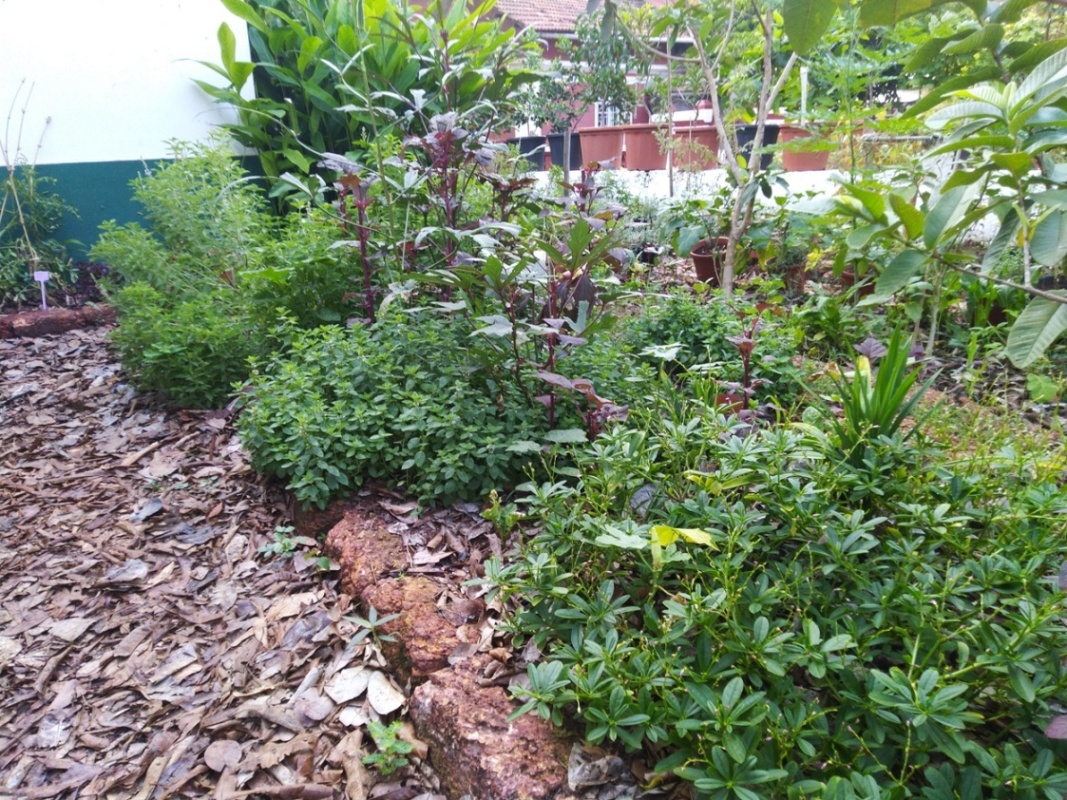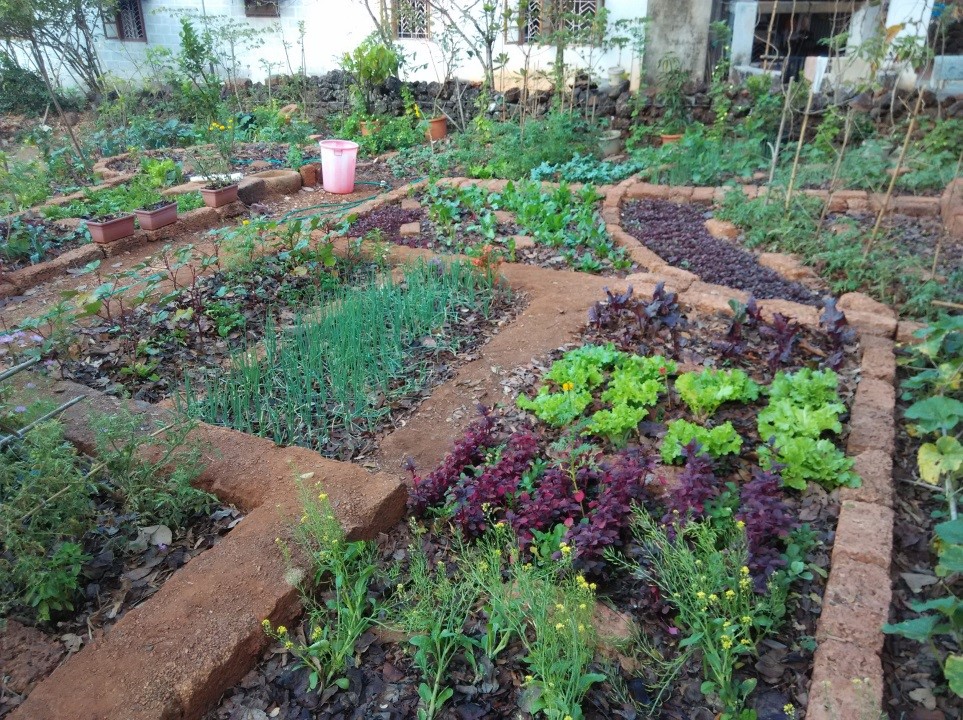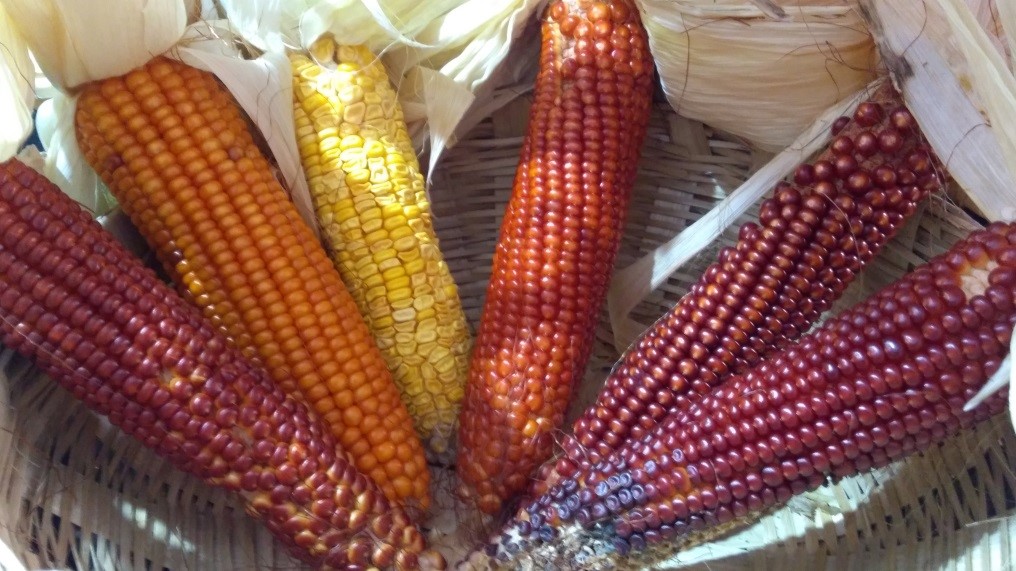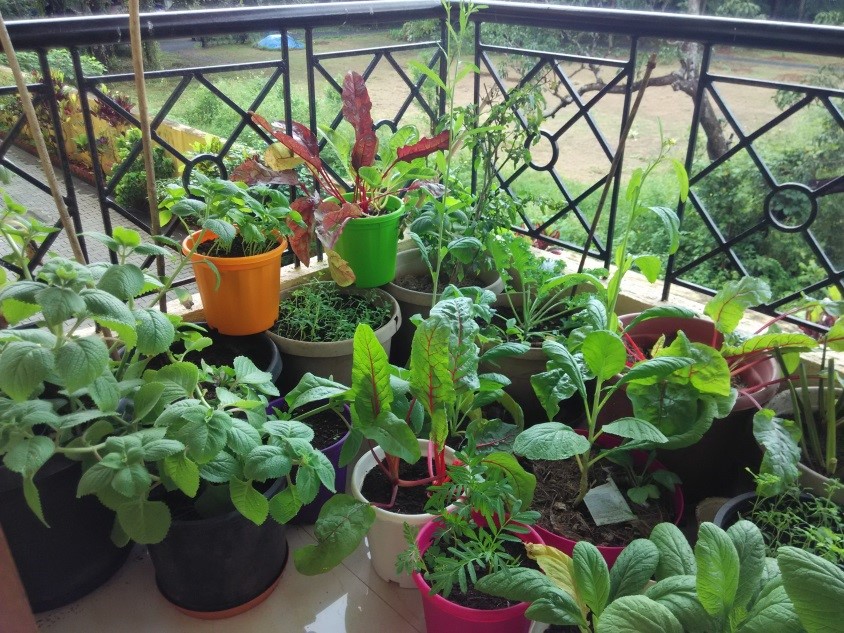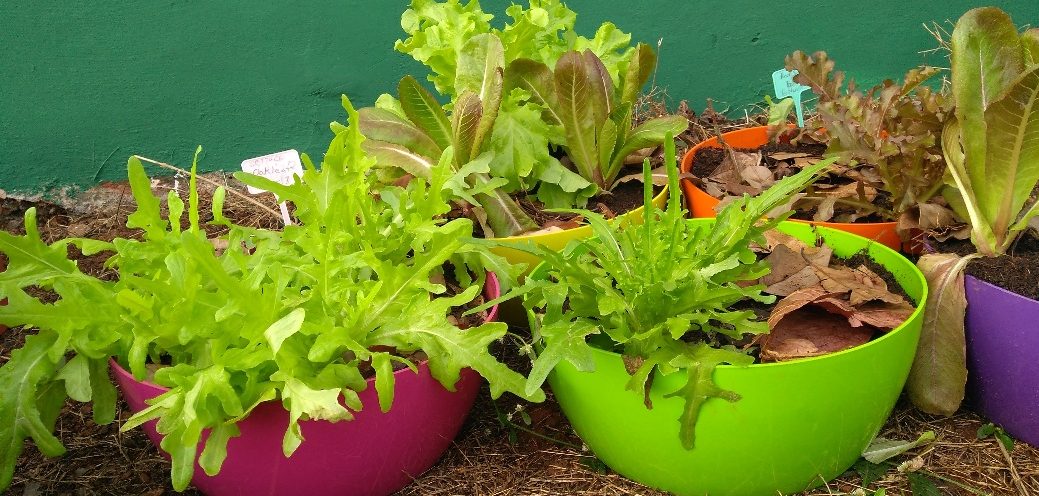
Growing Your Own Organic Food
Organic food has become popular, but can cost a pretty penny if bought in the market. Growing your own food is not only possible, but can result in a bounty that can be shared by friends and family. Understanding and joining forces with Nature to grow your own food will ensure many hours of pleasure in your garden followed by rewards that sometimes not even money can buy!
The Importance of Chemical Free Food
Today as we look around, we are constantly reminded of how food is not the same as it used to be. Rampant use of chemicals to grow the food we eat, adulteration and unhealthy practices for preservation characterise a lot of the food that is now available in markets.
Food that is free from chemicals, or grown organically (without using synthetic chemical fertilisers and pesticides) is safe for us and our families, it is known to be more delicious as well as nutritious. By not using chemicals to grow our food, we protect the soil and water our lives are so intricately linked to, thereby furthering the health of our environment and our communities.
Anyone Can Grow
People are nervous about growing their own food for a number of reasons. Over the years as we have tended our kitchen gardens as well as shared practices with others, we have come to believe that truly anyone can grow! With a little bit of knowledge, perseverance and observation, we have found one can have a thriving kitchen garden in a matter of weeks.
Food can be grown at any scale, be it a few pots on your window grille, balcony or terrace or a larger garden in the soil. Usually by spending 4-5 hours over a typical week, we can create a productive and rewarding source of fresh, chemical-free food, literally, right in our backyards.
Why we MUST grow…
It is very well known that eating chemical-free, healthy and nutritious food is a prerequisite for good health. Chemical-free food builds healthy people and immunity. Not only is it more delicious because of the methods used to grow it, it tastes even better when it is fresh. Nothing can beat the freshness of vegetables, fruits and herbs from your own garden, which may have travelled just a few feet from the garden to the kitchen. Carrots from our garden are not just carrots, but great carrots for these very reasons!
When we choose to grow food for ourselves and our families, we make an important decision to be in control of what we put in our bodies. With several thousand types of tomatoes, it is curious that we only get to see one or two types in the market. Growing our own food, or even some part of it, means we can choose what varieties of different vegetables and fruits we get to eat. Some varieties of tomatoes are delicious eaten raw, others are good for juicing and still others are tart and great to cook with. While the market favours varieties that travel well, our choices in our gardens can be based on the use, the flavour and the taste. In making these choices we also choose to preserve the biodiversity that nature has endowed us with.
Growing our own vegetables and fruits means we tend to reduce the food miles involved in getting our food to our plates. This has positive impacts on the environment and it also increases self-reliance, something which has taken on a new meaning since the start of the COVID pandemic.
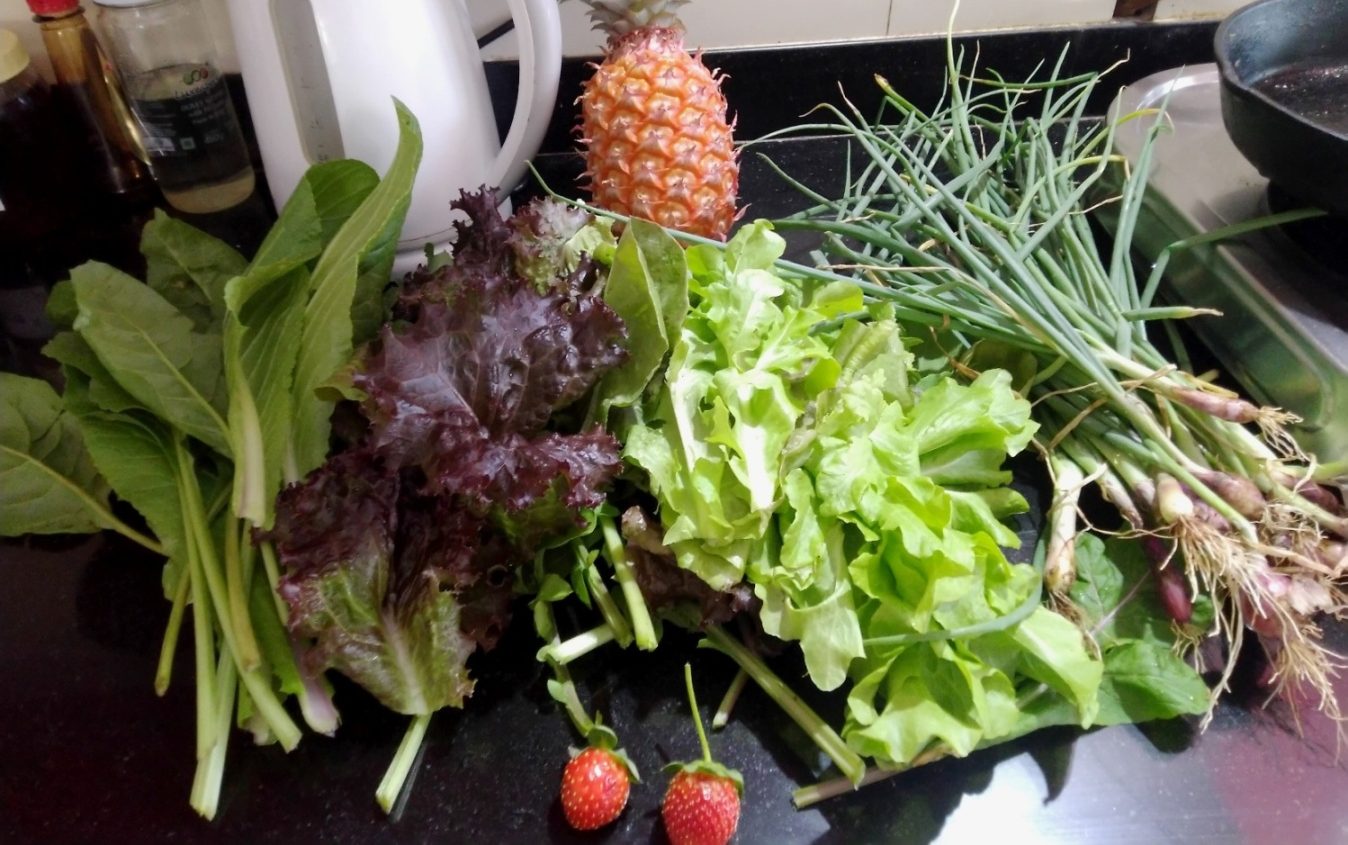
Choosing to grow our own food makes our food healthier (pesticide free), more nutritious (fresher and nutrition dense) and more delicious and flavourful.
Types of kitchen gardening
- Growing in the earth (in your garden) – The most common kind of kitchen garden that comes to mind when we think of one is the cultivated backyard. Seasonal vegetables are grown in beds that contain soil. The basics that we need include of course, soil, sufficient direct sunlight on the garden and a system to regularly water the plants. How big a kitchen garden we need depends on how many people we want to grow for, how much of our food we expect from our garden, whether we plan to grow just vegetables or fruits too. Small spaces can be surprisingly productive and just as satisfying to cultivate. These gardens are easy to create when one lives in an independent house with a little bit of land around.
- Growing in pots (on balconies and terraces) – But what if one lives on the 23rd floor of a tall building in the middle of a metropolis, where having land to grow on is the stuff of fantasies? Don’t be disheartened, there is a huge repertoire of things that can be grown in containers. The basics are the same – good direct sunlight and sufficient water. The soil is contained in pots and planters of appropriate sizes. 8”-10” pots are good for leafy vegetables and herbs, 12”-14” pots are good for larger plants with vegetables like tomatoes, brinjals, cucumbers etc. 18”-24” pots are great for growing fruit trees like chikoo, guava, limes, custard apple, figs, pomegranate etc… Shaded balconies limit what we can grow to the shade tolerant crops (like black pepper, ginger, turmeric, colocasia and some leafy vegetables too). But sunny balconies, terraces and even window grilles can house vibrant kitchen gardens that can supply a regular stream of fresh, organic and seasonal ingredients for our kitchens.
Healthy and Successful Gardens Mimic Nature
The key to growing food organically, is to understand and mimic nature. Natural systems are efficient, effective and sustainable. If we follow some simple principles, growing our food is not a battle to be won against Nature, but a partnership to be cherished!
Build great soil, and maintain it – Great soil is living soil. That means it is alive with microbes, worms and bugs of all kinds. These all perform their roles in moving nutrients through your soil and to your plants. Adding lots of decomposed organic matter like leaves, manures and compost regularly to your soil, ensures that the microbial life is enrichened and the nutrients replenished regularly.
Mulch Mulch Mulch! – The most fertile soil one finds is on the forest floor. This soil is often not visible, as it is covered in a thick layer of dry and decomposing leaves (mulch). It is this very litter of leaves that protects the soil from washing away, drying out, getting too hot or too cold. It creates the right environment for all kinds of microbes and life to thrive. This layer also discourages the growth of unwanted plants and as it decomposes, it puts back nutrients into the soil – a simple and effective technique that naturally addresses several concerns of gardeners. Mulching our soil, whether in the garden on in pots and containers, is one of the best practices to follow.
Plant a diversity of crops–Nature likes variety and so do our palates. Growing a mix of different crops rather than just a few things aligns us with another natural principle, thereby making our gardens resilient and healthy while also providing us with a number of ingredients in our kitchen.
Grow what is seasonal – The old adage, “There is a time for everything” literally plays out in our gardens. Crops grown out of season are more likely to be sick and unproductive. We end up spending all our time protecting these fragile plants by spraying whatever (often synthetic chemicals) we can lay our hands on to protect our efforts in the garden. Growing what is in season means plants grow with little effort, generally remain healthy and produce abundantly.
Rotate crops in beds and pots–Moving crops around in your garden or pots ensures that different nutrients are taken by different plants from the same spot or container. This gives the soil time to replenish what is depleted. For example, growing tomatoes in the same spot season after season increases the chances of plants being deficient in micronutrients, resulting in the cycle of week plants that then need to be supported with increasing doses of fertilisers and pesticides to keep them alive. Tomatoes, followed by beans, followed by gourds, followed by a leafy vegetable and then back to tomatoes, is an example of a planting plan to follow.
There are many different philosophies to growing with more natural systems and sustainable practices. These include approaches like Permaculture, Aquaponics Biodynamic methods, Agroforestery etc… Understanding the various practices & different approaches, adopting and incorporating them into your kitchen garden can make growing food a sustainable and productive affair. The basic tenets of all these is that we need to work together with nature and not against it. This not only makes our work easier but also ensures we get healthy, nutritious and delicious food on our plates.
About Yogita Mehra

Yogita Mehra started Green Essentials in Goa (in 2009), out of an interest in the environment, a desire for better food quality and her passion for kitchen gardening. Involved in environmental causes since college, she went on to get her Masters in Environmental Economics from the University of Massachusetts. Yogita was also a researcher with The Energy and Resources Institute (TERI).
From 2008-2012, together with her husband, she has ran three organic farms. The produce from these farms was sold directly to consumers via a weekly Farmers’ Market. Supermarkets, hotels and home-delivery models too were a part of the marketing plan for these farms.
She has also worked closely with the Chorao Farmers Club and helped them create a brand and marketing plan for their local red rice, Mankurad mangoes and Cashews.
She currently runs Green Essentials, now located in Socorro, (Porvorim) that helps Goan kitchen gardeners to grow food without using chemicals, by conducting workshop and making organic inputs like manures, seeds, seedlings, tools etc available.

